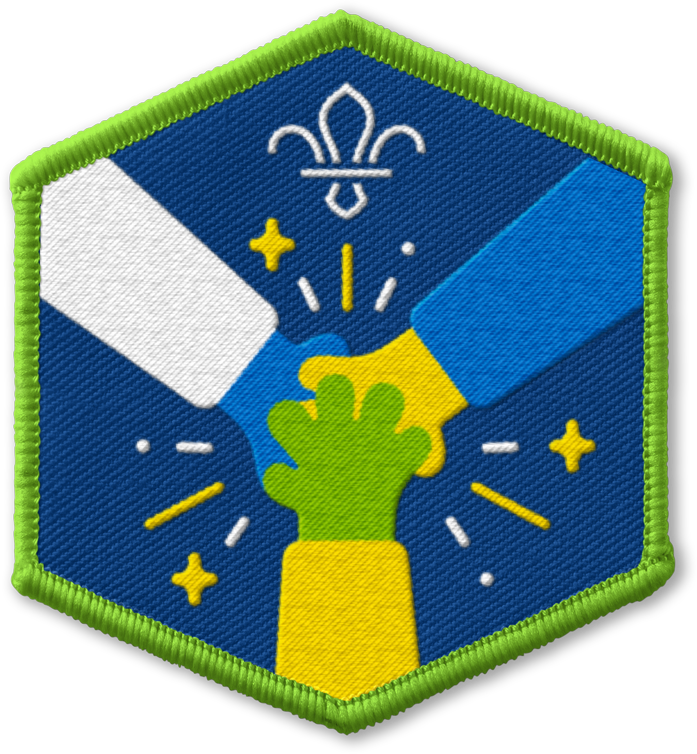
We don't talk about Bruno. We DO talk about you.
You’ll need
- A device to play YouTube videos for the whole group to see (optional)
Before you begin
- Use the safety checklist to help you plan and risk assess your activity. Additional help to carry out your risk assessment, including examples can be found here. Don’t forget to make sure all young people and adults involved in the activity know how to take part safely.
- Make sure you’ll have enough adult helpers. You may need some parents and carers to help if you’re short on helpers.
Offering support for this activity
- You could look out for key dates in the calendar that you could plan your talk around, such as World Mental Health Day or Children's Mental Health Week.
- This might be the first time that a young person has explored the issue of mental health or thought about speaking with someone about this.
- If a young person shares their own mental health problems, let them know they can talk to you afterwards and that they can get support from Childline (call 0800 1111 or go to childline.org.uk).
- Remember to follow the ‘Young People First’ code of practice (the Yellow Card) in any conversations, and read our guidance on supporting mental health in Scouts.
Tell the story
Encanto tells the tale of an extraordinary family, the Madrigals, who live hidden in the mountains of Colombia. When the family had to flee from attackers, they found the candle of Alma, which created their home. Their home is called Casita and it’s a magical house for the family to live in. It’s located in a magical place called Encanto, which is bordered by high mountains. A new village has grown around the Casita, protected by the candle.
The magic of the candle also gives everyone in the Madrigal family a unique gift to help them to serve the villagers. The gifts have been things, such as seeing into the future, super strength or the power to make people better with food. Every person in the family got their magical gift at the age of five, all except one, Mirabel. But when Mirabel discovers that the magic surrounding the Encanto is in danger and it might all fall down, Mirabel decides that she, the only ordinary Madrigal, might just be her exceptional family's last hope.
- Gather everyone together in a circle. Ask everybody about the story of Encanto and if anyone’s seen the film.
- You could chat about the Family Madrigal, how they help their community with their unique gifts to overcome challenges.
- If you’re able to, play ‘We don’t talk about Bruno’ from the Encanto soundtrack or watch the 'We Don't Talk About Bruno' music video.
- Ask people to think about why the characters ‘don’t’ talk about Bruno while they watch the video, or listen to the song and see if people can remember the reasons people don’t talk about Bruno.
- Ask people what they think someone should do if they’ve a worry, a concern or a problem they’re unsure about? If anyone has their hand up, choose a few people to answer.
- Explain that it’s always important to talk to a grown-up we trust about something that’s worrying us and how we’re feeling. It should be someone they know well such as a teacher, parent or carer, grandparent, or Scout volunteer.
- Discuss how the characters in Encanto each have their own challenges and how when they speak to each other and share those challenges and their emotions, this helps e.g. Luisa talking to Mirabel in the song, Surface Pressure.
- Can anyone remember a challenge the Madrigal family faced?. Some things people might mention are Isabela not wanting to marry Mariano, Alma having high expectations of the family and wanting them to be perfect, and Bruno being excluded and in hiding.
- If anyone makes a disclosure during this discussion, remember to follow the‘Young People First’ code of practice (the Yellow Card) in any conversations, and read our guidance on supporting mental health in Scouts.


Talking about feelings
- Chat with the group and ask if anyone has any ideas as to how we can tell how people are feeling?
- Talk about body language. Does anyone know what it is?
- Tell everyone how we can sometimes tell how people might be feeling by looking at how they behave or act.
- As a large group, come up with a list of different feelings we can have, such as happy, sad, angry or frustrated. You could use the Encanto mood pictures to help promote discussion.
- In small groups, or as one larger group, choose one of the feelings and think about it in more detail. You could ask the young people some questions, such as:
- What do we mean by that word?
- What words or images come to mind when we hear that word?
- How might someone feel if they are experiencing this emotion?
- Where might they feel it in their body?
Play the game
- Tell everyone that you’re going to play a game about body language.
- Explain that everyone is going to move around the space. Then, when the person leading the activity shouts out a feeling, such as happy or sad, people need to then move around the room in a way to show everyone that’s how they’re feeling. For example, if you’re feeling happy, you might walk standing tall, smiling, with a skip in your step. If you’re feeling sad, you might walk slouched and slowly, look down, pretend that you’re crying and hide your face.
- Start the game and get everyone moving around the room, then call out a feeling.
- Some examples of different feelings are:
-
- Confident
- Angry
- Frustrated
- Silly
- Scared
- Proud
- Disappointed
- Confused
- Tired
- Upset
- Bored
- Embarrassed
- Hungry
- Nervous
- Surprised
- Loved
- Shy
- Worried
- Happy
- Excited
- The young people should then move and act as if they’re feeling that emotion.
- To make it harder, you could change the ‘feelings’ to being scenarios and the young people need to react. Some scenarios might be:
-
- Someone called you a mean name
- You won a colouring-in competition
- You’re about to perform a dance in assembly
- You’ve lost £2 from your pocket at a disco
- Your friend wants to play with you
- You have a spelling test tomorrow
- You’re about to go down a big slide
- It’s your birthday tomorrow
Talking about feelings
- Now, gather everyone back together. Ask the group what they thought of the game. What did they do for different emotions?
- Ask everyone if it’s OK to feel these emotions? Tell everyone that we’ll all be upset, frustrated, grumpy or angry sometimes, and that’s OK. It’s normal to feel sad sometimes, but problems and emotions are much easier to deal with if we talk about them.
- Remind everyone it’s important to share worries or problems to help us to feel better and make the problem or feeling we’re having easier and made better, too.
- Explain that lots of things might be problems for us, such as a bad day at school or someone saying something mean to us.
- Remind everyone to tell a grown-up they trust about their worries, problems they’re facing, or how they’re feeling.
- Discuss with the group who they could talk to. Some ideas include a parent or carer, a teacher, an older sibling, a grandparent or a Scout volunteer. Remind everyone that you’re always there for them if they need help.
© Disney
Reflection
Lots of things may cause us to worry. We’re all upset, grumpy, angry, nervous, worried or scared sometimes and it’s okay to feel this way, but we can talk about our worries, feelings and problems to make them better, especially if we’re scared. Problems and feelings are much easier to deal with if we talk about them.
Who could you talk to if you have a problem, a worry or are feeling upset? If you don’t want to talk about it, you can write it down and give it to someone you trust, too.
What can you do to help you feel better? It might be you need to talk to someone, or you might need to say sorry to someone, too.
Some people might not have adults that they trust, but there’s still people to help them. There are charities or organisations who can help them. If you need someone to talk to you could call Childline, which is a charity set up to help young people and give them someone to talk to. You can talk to them on the phone or online. It’s completely free and doesn’t show up on your phone bill.
Safety
All activities must be safely managed. You must complete a thorough risk assessment and take appropriate steps to reduce risk. Use the safety checklist to help you plan and risk assess your activity. Always get approval for the activity, and have suitable supervision and an InTouch process.
Run the game sat in a circle, rather than moving round the room.
All Scout activities should be inclusive and accessible.
You could let a young person take it in turns to shout out what emotions they’re doing next.

